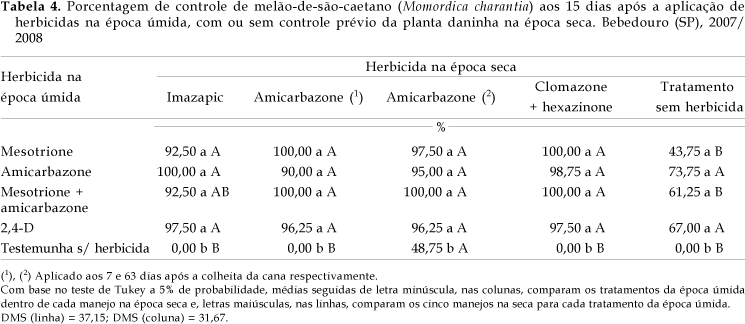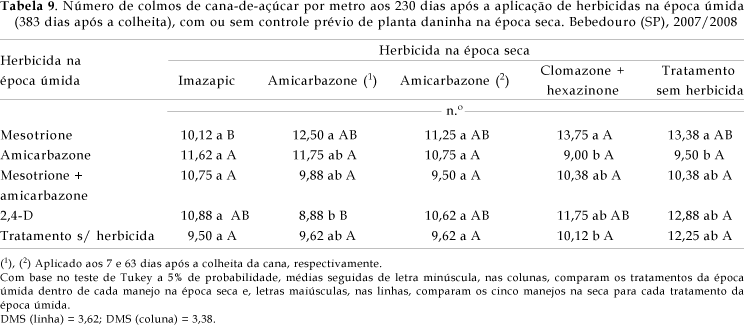Com o objetivo de estudar o efeito de herbicidas aplicados em pré e pós-emergência, isolados e em combinações nas épocas seca e úmida, para o controle de melão-de-são-caetano (Momordica charantia) em área de cana-soca, desenvolveu-se um experimento no período de junho de 2007 a julho de 2008, na Fazenda Gabriela, no município de Bebedouro (SP). O delineamento experimental foi o de blocos ao acaso, com quatro repetições, em esquema de parcela subdividida. Nas parcelas foram estudados quatro tratamentos de herbicidas: imazapic (0,147 kg ha-1) e amicarbazone (1,4 kg ha-1), aplicados uma semana após a colheita da cana; clomazone mais hexazinone (0,8 kg ha-1 + 0,2 kg ha-1) e amicarbazone (1,4 kg ha-1), aplicados em agosto, aos 63 dias após a colheita da cana, pulverizados na época seca, além de tratamento sem aplicação. Nas subparcelas foram testadas as aplicações em pós-emergência de quatro tratamentos de herbicidas: mesotrione (0,192 kg ha-1), amicarbazone (1,4 kg ha-1), mesotrione mais amicarbazone (0,096 kg ha-1+ 0,7 kg ha-1) e 2,4-D (1,005 kg ha-1), na época úmida e a manutenção de tratamento sem herbicida. Para o controle de melão-de-são-caetano a aplicação de herbicidas na época úmida (período de chuvas) é obrigatória e desnecessária na época seca. Os herbicidas mesotrione e amicarbazone, isolados ou em mistura, aplicados na época úmida são eficazes no controle em pós-emergência das plantas e na inibição de novos fluxos de emergência de melão-de-são-caetano na época úmida.
amicarbazone; clomazone mais hexazonine; 2,4-D, imazapic; mesotrione; Momordica charantia










